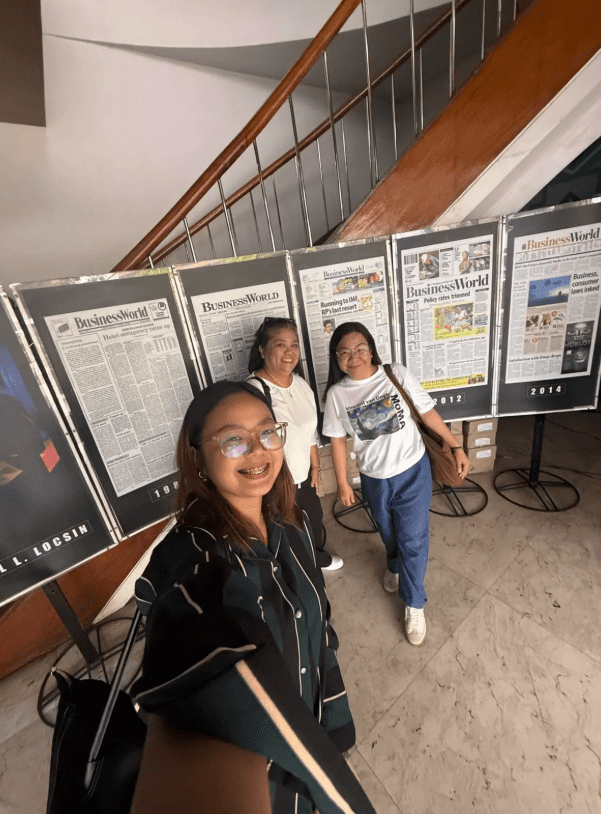How traditional media helps specific industries that need credibility to thrive
It’s easy to assume that traditional media (radio, newspapers, and magazines) has lost its relevance.
Yet for brands operating in sectors where credibility, community connection, and long-term trust are paramount, traditional outlets remain essential for their PR and marketing strategy.
While digital platforms offer immediacy and scale, they can also be fleeting, crowded, and saturated with unverified voices. They can also be very flimsy. For instance, I currently work for a loan consultancy. Part of the work includes a lot of confidentiality. Meaning that I can’t just do testimonials–especially if clients are sensitive about their credit standing.
In contrast, local radio and print offer something the modern media landscape often lacks: authority, depth, and trustworthiness. For industries such as finance, real estate, healthcare, and IPO-bound companies, that credibility isn’t just valuable, it’s non-negotiable.
The Myth of “Dead Media”
I wrote about why traditional media matters a few months ago, thinking that this idea that traditional is obsolete would evolve somehow.
Turns out, I spoke too soon.
Traditional media being obsolete is still so prevalent, and false. It’s a misconception fueled by digital dominance. While consumption habits have undeniably shifted in the age of AI, audiences haven’t abandoned print or radio.
As of 2024, 45% of Filipinos trust Manila Bulletin in both print and online news platforms. Philippine Star comes at a close second with 43%. (Source)
Local newspapers and radio stations still reach millions weekly–particularly among decision-makers, professionals, and older demographics who have (and control) significant spending power.
Moreover, many traditional outlets have integrated with digital platforms. Think podcasts, e-papers, newsletters. Essentially, it’s the best of both worlds.
For PR professionals and brand strategists, this means that traditional channels remain powerful credibility engines. Especially when they’re paired strategically with the digital.
Credibility: The Currency of Traditional Media
Again, there are industries that can’t rely solely on social media platforms at all.
In finance, real estate, and public markets, credibility isn’t optional. It’s the foundation of consumer trust. Clients and investors in these spaces are usually older. They also often make high-stakes decisions based on reputation, reliability, and perceived authority.
A feature in The Manila Bulletin or an interview on a respected business radio program carries far more weight than a social media post or paid ad. That’s because earned media coverage (especially from established outlets) is perceived as third-party validation.
Some Tangible Examples
When a financial firm is quoted in a print article about market trends, or a real estate developer is interviewed on a trusted local station, the endorsement isn’t direct…but it’s powerful. It signals legitimacy. Journalists act as gatekeepers of credibility, and their platforms lend a level of authority that self-promotion simply can’t replicate.
For IPO-bound companies, this validation can be game-changing.
In the lead-up to a public listing, media scrutiny intensifies. Investors, analysts, and regulators all watch how a company is perceived in reputable outlets. Securing coverage in respected newspapers or on established radio programs reinforces transparency and stability—two critical factors in investor confidence.
The Local Community Connection That Matters
For brands operating regionally or within defined markets (such as real estate developers, local banks, and community-driven organizations) local radio and newspapers remain unparalleled in reach and hyperlocal relevance.
For the most part, social media platforms can succeed, too. But from experience, real estate developers and banking professionals aren’t always the most social media-savvy…because they don’t have to be.
Local audiences are more likely to trust information that comes from familiar sources. A local newspaper article or radio segment speaks to them in their cultural context. This proximity effect builds authenticity and affinity.
Furthermore, local media relationships often prove to be long-term assets. Maintaining consistent engagement with regional outlets can create ongoing opportunities for coverage: project updates, expert commentary, or event participation.
This traditional approach helps brands sustain a presence that feels genuine and connected.
Tangibility and Depth
Print and radio offer something tangible: depth and permanence.
These industries lean more toward traditional because older audiences tend to assign greater credibility to printed words and professionally produced broadcasts (Asad and Parker, 2025).
A full-page feature, a business profile, or an in-depth interview also allows a brand to tell its story with nuance. These formats encourage thoughtful consumption. Readers and listeners engage longer, absorb more detail, and connect with narratives on a human level.
For financial institutions, complex stories often require context and explanation. Print journalism allows for that depth:
- charting trends,
- analyzing risks, and
- presenting expert insights in a format that feels substantial.
Similarly, talk radio or business programming enables authentic voice and personality to come through, establishing emotional connection and trust.
The element of editing and polishing add depth to traditional media, too.
Traditional Media as a Signal to Investors and Stakeholders
For companies approaching major financial milestones (i.e. IPOs, mergers, or funding rounds) media strategy is about publicity and perception management.
Investors still read financial pages and listen to reputable business programs. When a company consistently appears in respected outlets, it signals stability, professionalism, and transparency—key attributes investors look for before committing capital.
In contrast, over-reliance on social media or self-published content can raise red flags. Stakeholders might question whether a company can stand up to external scrutiny.
That’s why PR professionals often leverage traditional media during pre-IPO and post-listing phases: to build trust with journalists, shape the narrative early, and establish a foundation of credibility that supports long-term investor relations.
Integrating Traditional and Digital for Maximum Impact
The smartest brands don’t view traditional and digital as competitors, but as complementary forces.
A strategic PR approach might begin with a print feature or local radio interview to establish credibility, then amplify that coverage across LinkedIn, email newsletters, and paid campaigns. Screenshots of newspaper features or clips from radio interviews perform well online precisely because they seem credible.
This hybrid strategy maximizes ROI: traditional outlets provide credibility, while digital channels provide reach. It’s the perfect blend for industries that must appear both authoritative and agile.
Newspapers Will Never Goes Out of Style
For brands in high-trust industries (finance, real estate, healthcare, and public markets), visibility comes second to credibility with longevity. And that’s where traditional media still shines.
Local radio and print remain powerful tools for shaping perception, earning trust, and establishing authority. They connect brands to communities, investors, and stakeholders in a way digital platforms alone cannot.
At the end of the day, trust isn’t viral. It’s earned. And often, it’s earned the old-fashioned way: through a trusted voice on the radio or ink on the page.
Are you in a high-trust industry, and your brand needs a more hybrid approach? Or do you need a bigger network of media press? Either way, NGP IMC has the portfolio of adapting to your needs. If you want to know more, you can contact them here, or set an appointment here.

Kriztin Cruz is a recruitment and digital marketing professional, freelance writer, hobbyist painter, and frustrated sociologist–with too many things to want and too little time to spare. She graduated with a Psychology degree in 2019 at De La Salle – College of Saint Benilde Antipolo. When she’s not drafting a corporate letter or working on anything digital marketing, you can find her doing the following, but not in this order: reading a good book, scavenging for a good book, sketching, painting, journaling, junk journaling, obsessing over an obscure Czechoslovakian surrealist film (or anything by Miyazaki or Del Toro), cooking, finding a cafe to relax in, and creating new things while a nice documentary plays in the background.


